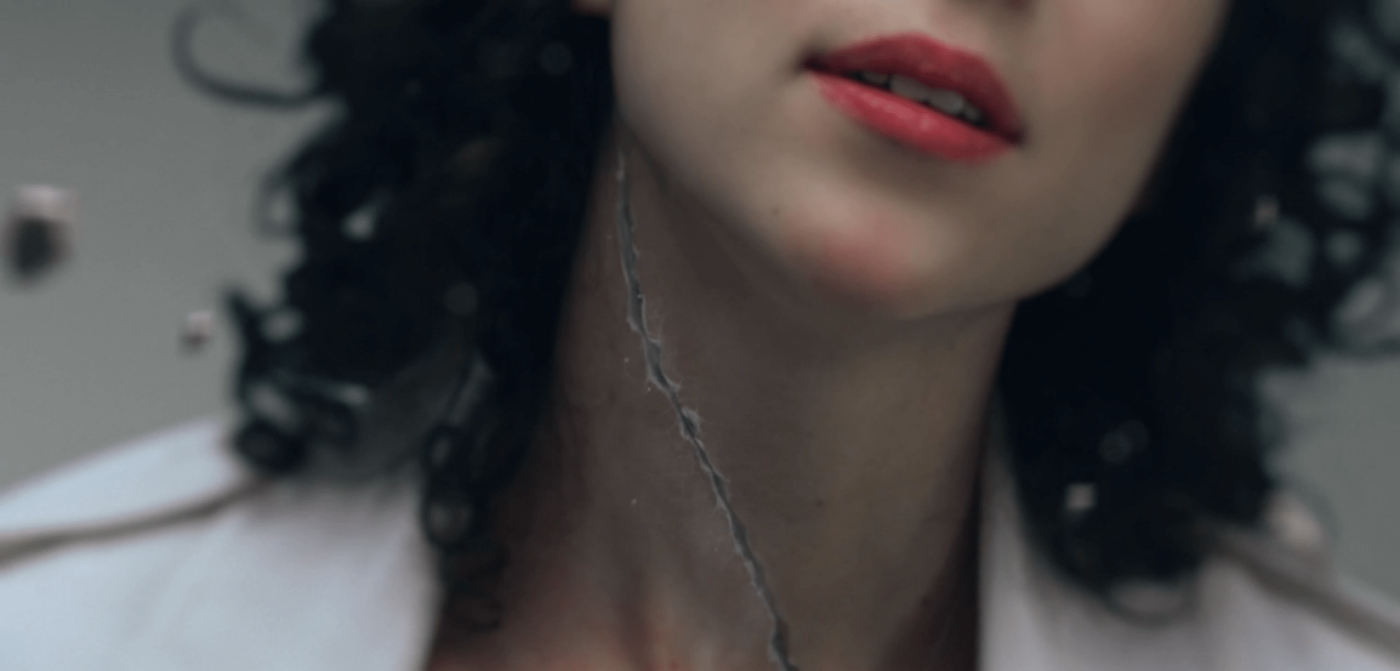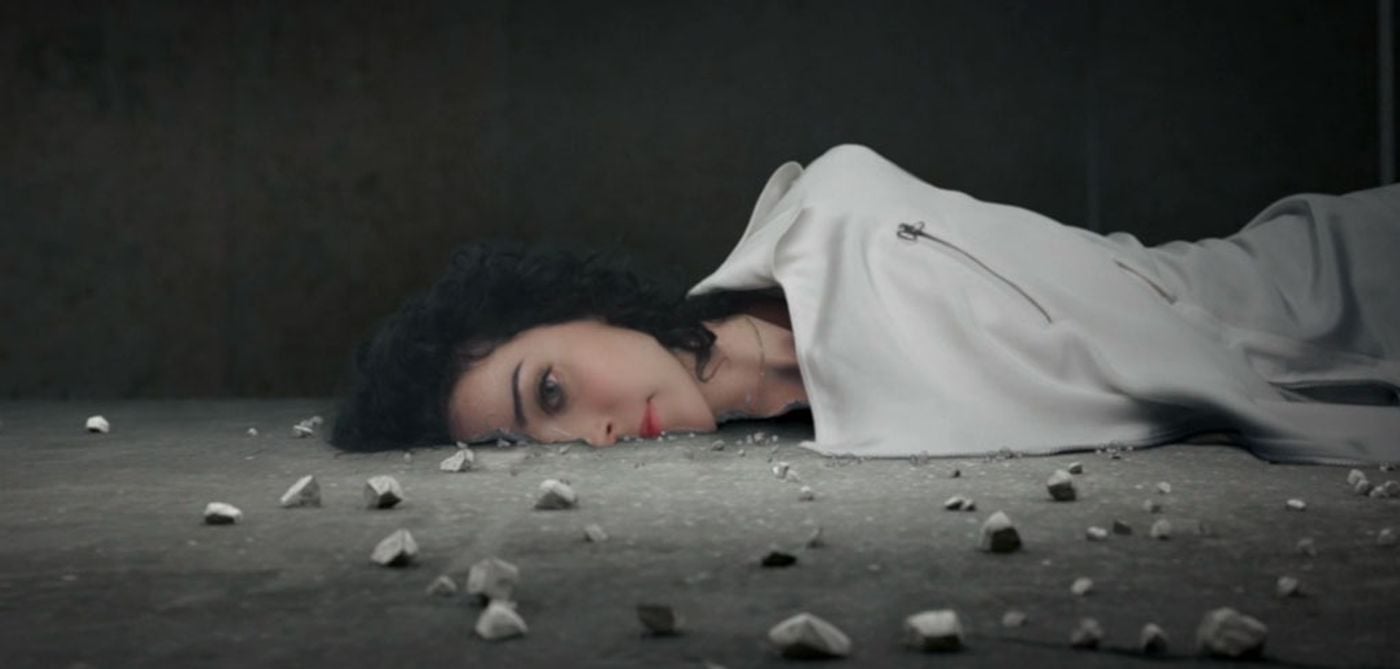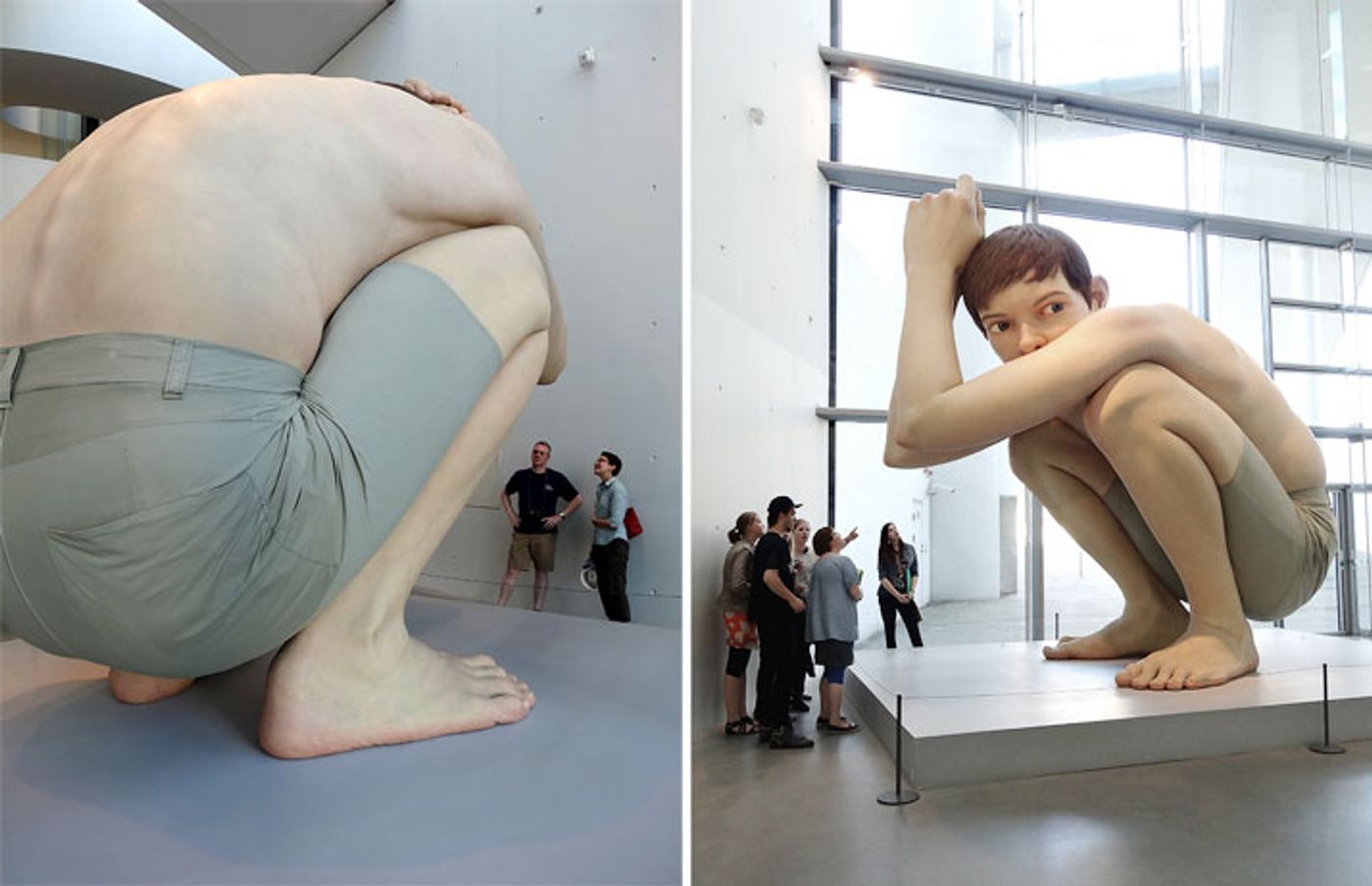
Ron Mueck-inspired 'Cheerleader' Music Video by St.Vincent
Words by Demetrios Gkiouzelis
Location
Ron Mueck-inspired 'Cheerleader' Music Video by St.Vincent
Words by Demetrios Gkiouzelis
When it comes to inventive narratives and breathtaking visuals, the music videos of American singer-songwriter and multi-instrumentalist St. Vincent, a.k.a. Annie Clark, are a sure-fire way to go. Whether that’s being abducted and buried alive, seen in her music video for ‘Cruel’, or summoning a flock of spellbound followers with her blank yet piercing gaze, in her music video for ‘Marrow’, St. Vincent never fails to deliver a visually stunning and equally shocking performance.

video screenshot © Hiro Murai
When it comes to inventive narratives and breathtaking visuals, the music videos of American singer-songwriter and multi-instrumentalist St. Vincent, a.k.a. Annie Clark, are a sure-fire way to go. Whether that’s being abducted and buried alive, seen in her music video for ‘Cruel’, or summoning a flock of spellbound followers with her blank yet piercing gaze, in her music video for ‘Marrow’, St. Vincent never fails to deliver a visually stunning and equally shocking performance.
‘Cheerleader’ (2012) is the second music video released from her third studio album ‘Strange Mercy’ which received widespread acclaim from music critics. Directed by Los Angeles-based music video and commercial director Hiro Murai, the video opens with a close-up of an artificial-looking Clark lying on the floor, mechanically singing along to the track as if she were not human at all. But it is only when the director cuts to a longer shot that we realize that the porcelain-skinned singer is actually a gigantic sculpture displayed in a gallery.
The inspiration behind the idea for the video came from oversized sculptures of human figures by Australian hyperrealist sculptor Ron Mueck, and heavily influenced the theme and aesthetic of the clip. Mueck’s famed sculptures realistically reproduce the minute detail of the human body, tampering however with scale to create a weird dynamic between them and the audience. Despite the fact that they are uncomfortably exaggerated in terms of scale, seemingly dominating the space, they still manage to appear vulnerable and weak.
The video speculates an alternate world where a Mueck-inspired sculpture comes to life in front of the eyes of the museum-goers. It sets the scene for an oppressive environment where the singer is displayed as a lifeless museum piece. Playing with objectification and the relationship between the viewer and the object, the director breaks up the voyeuristic dynamic between her and the audience by switching the foundation of their relationship. The singer breaks free from the ropes and pulleys that control her movement and begins to walk away. Released from this oppressive environment, she crumbles into pieces a few steps later, thereby escaping her restrictive destiny. By turning rigid sculptures into life, Murai creates the setting for a formerly still object to suddenly come alive and assume an active role, towering over the audience. Speaking of taking control of one’s life rather than being an idle object succumbing to the desires of others, the lyrics of the song are beautifully reinforced by the empowering storyline of the video.
Annie Clark’s performance and general enigmatic aura in the video are very indicative of her musical style, which is noted for its wide array of instruments and arrangements, as well as lyrics with multiple related meanings that alternate between happiness and madness. Mysterious and baffling, there is a certain ambiguous quality about her that is open to interpretation. They say that the eyes are the windows of the soul; but in her blank and almost lifeless gaze, one finds it hard to read emotions, making her presence simultaneously disturbing and intriguing. And it is this feature of her aura that captivates museum-goers and us viewers alike.

video screenshot © Hiro Murai
